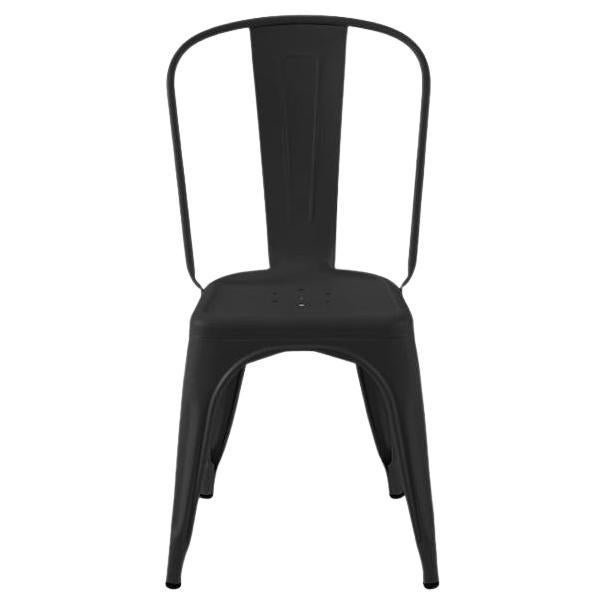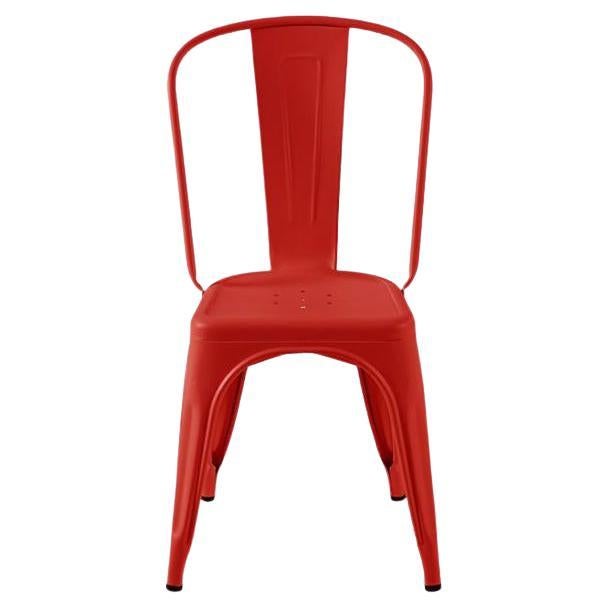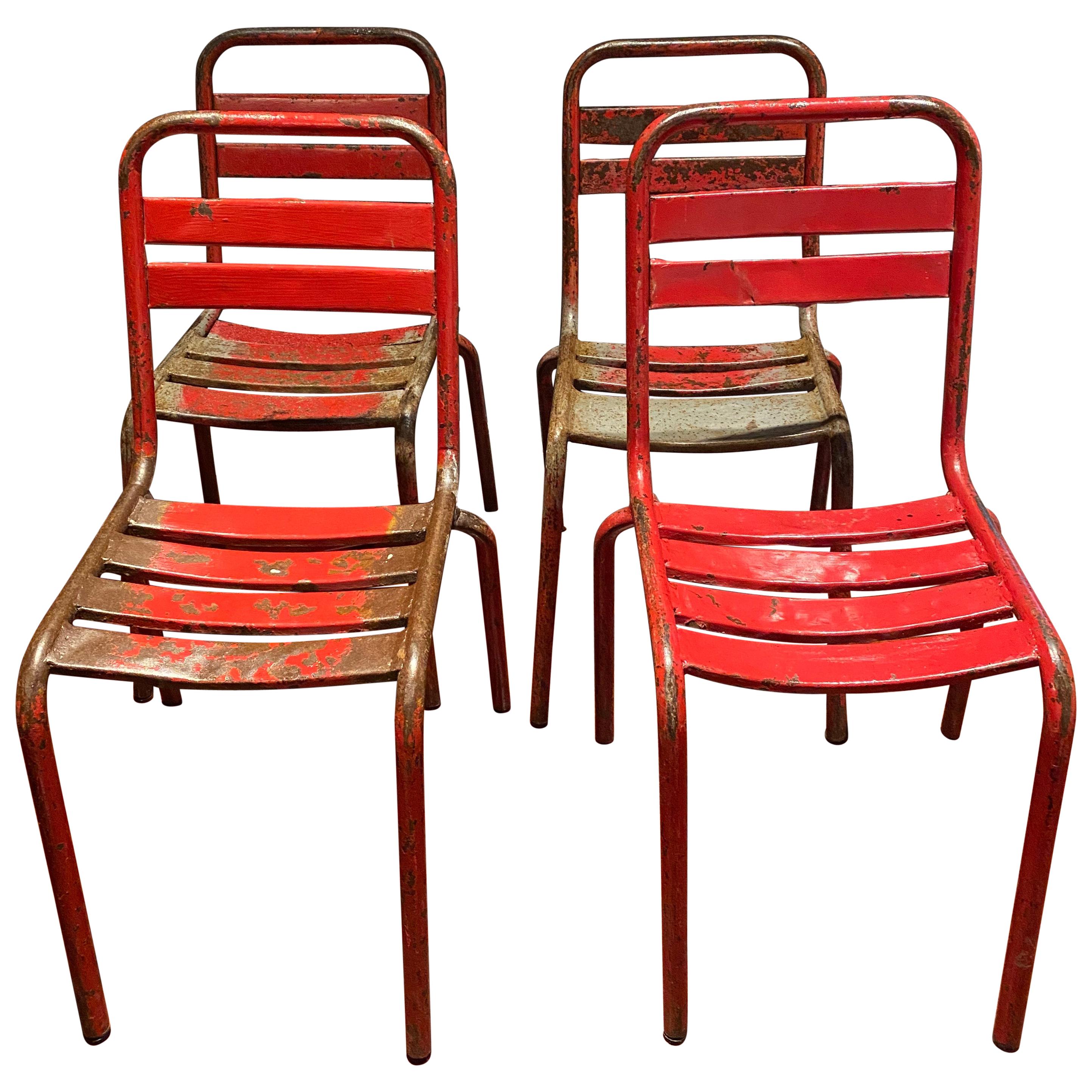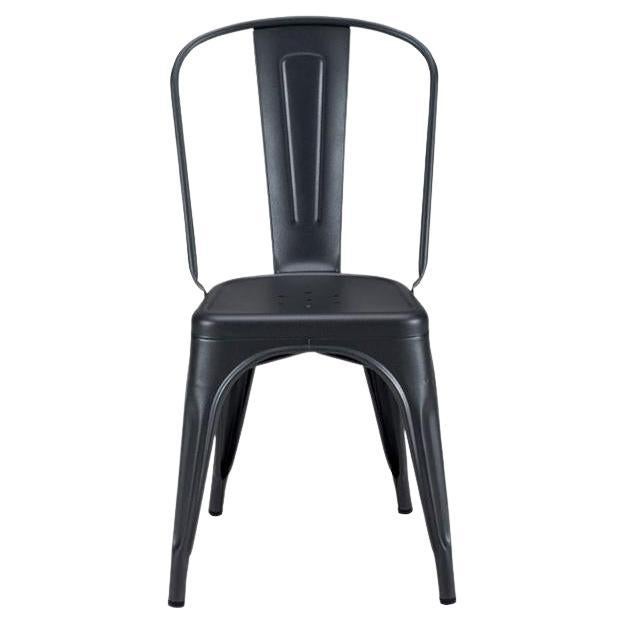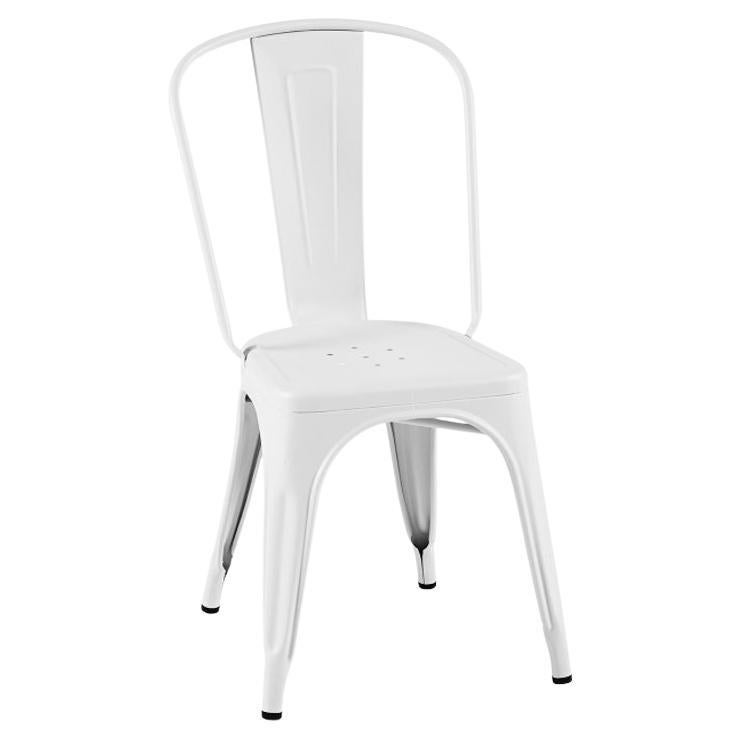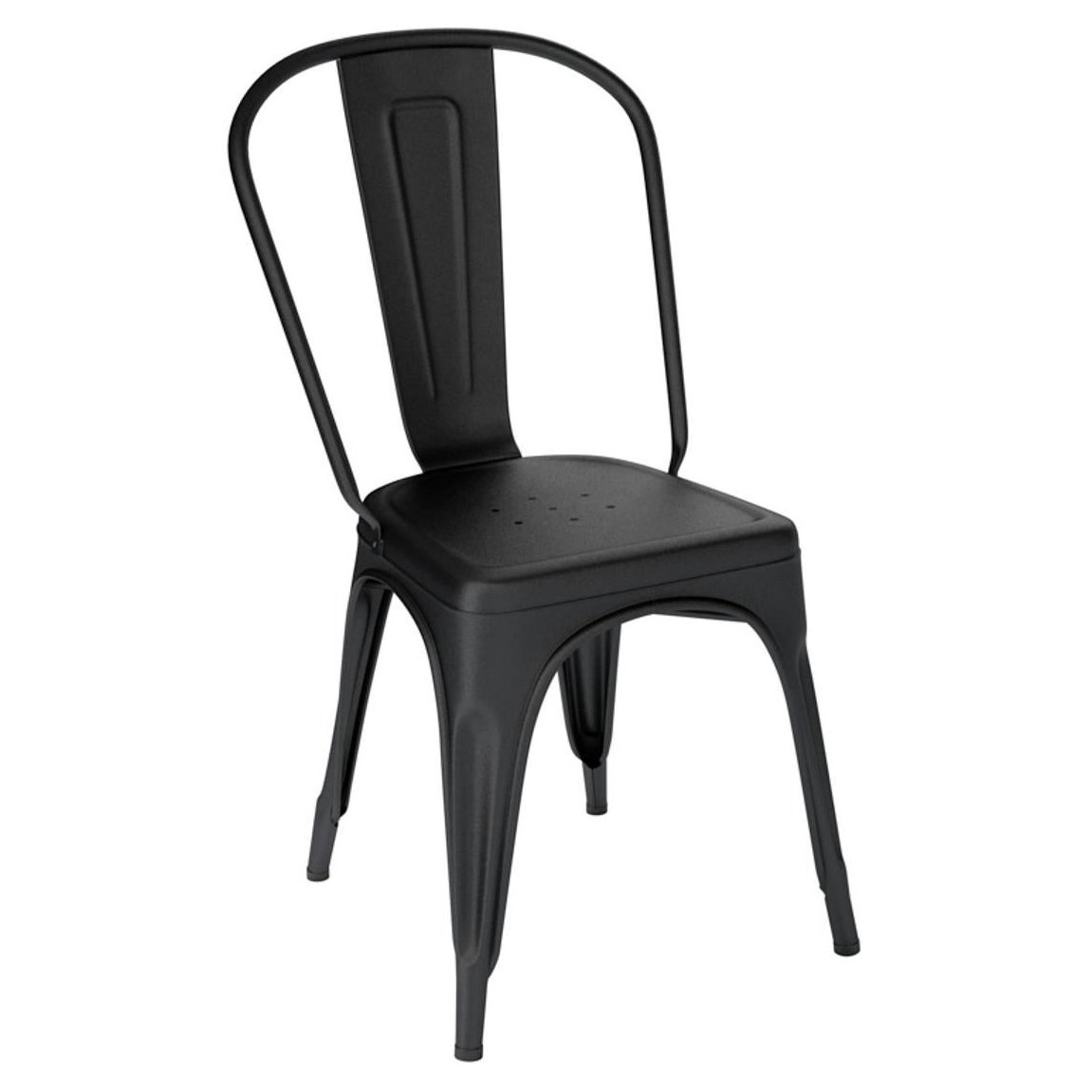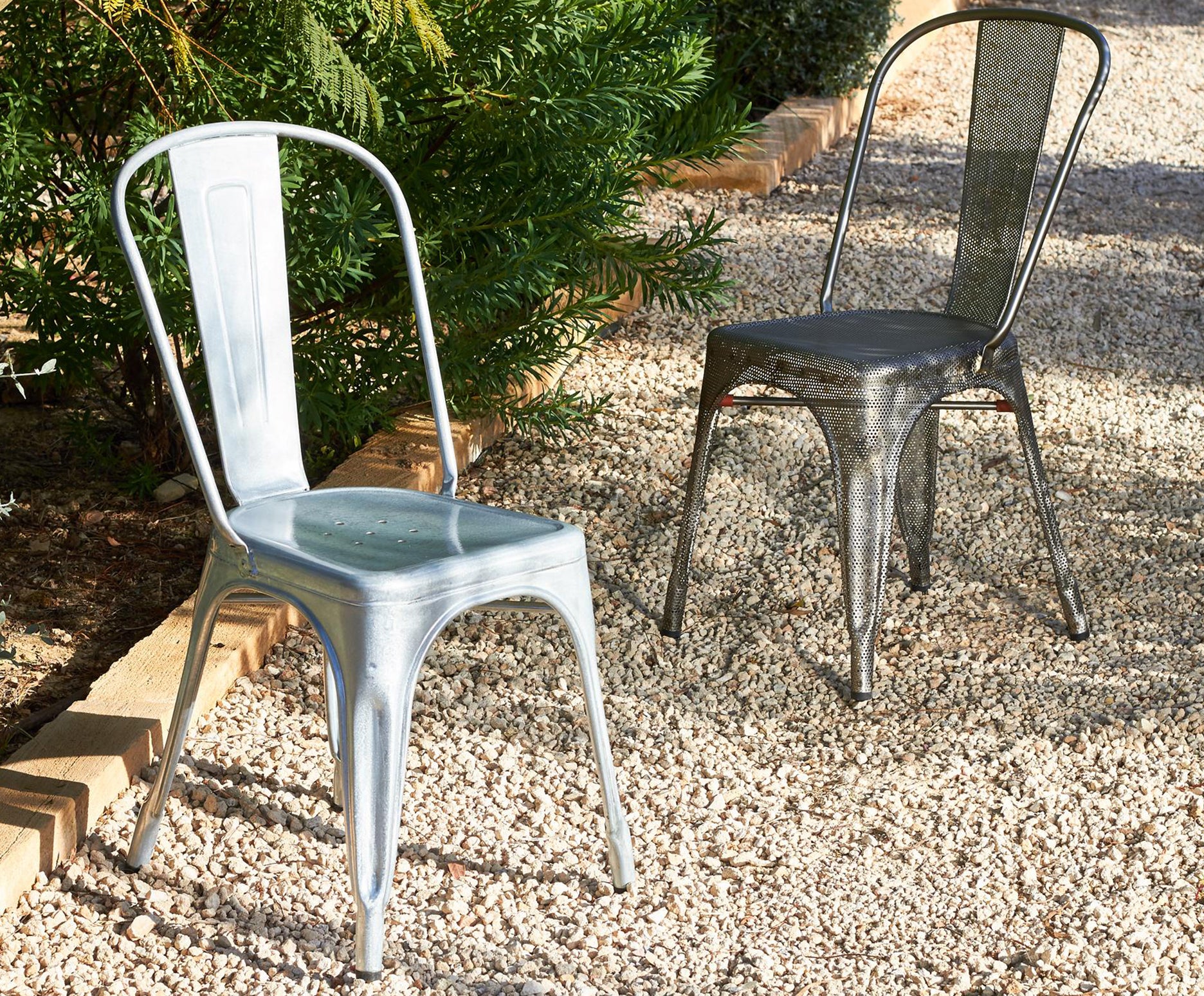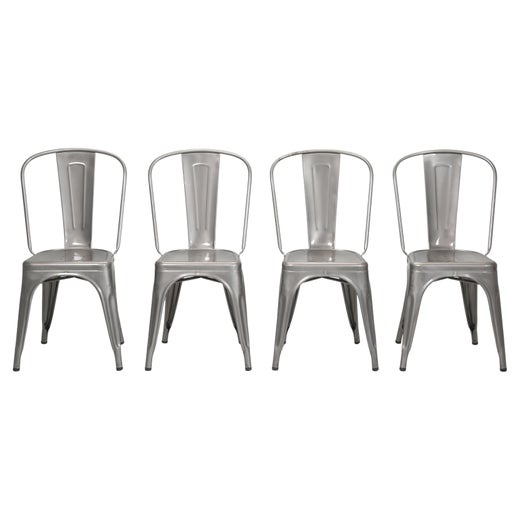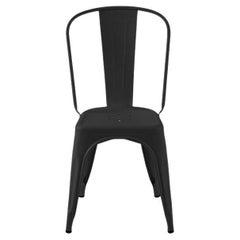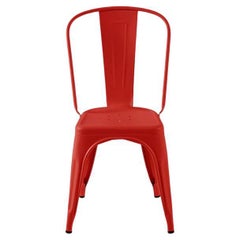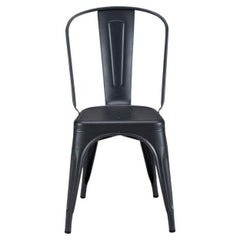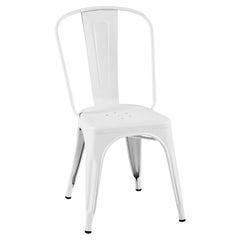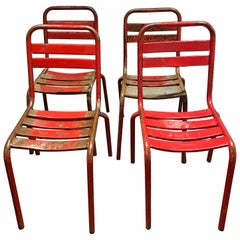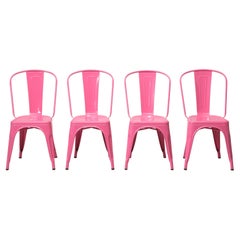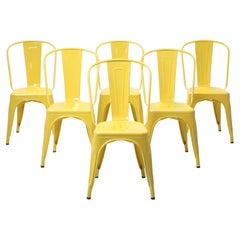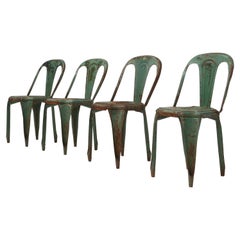A Chair Indoor in White by Xavier Pauchard and Tolix
About the Item
- Creator:Tolix (Manufacturer),Xavier Pauchard (Designer)
- Design:
- Dimensions:Height: 33.47 in (85 cm)Width: 17.33 in (44 cm)Depth: 20.28 in (51.5 cm)Seat Height: 16.93 in (43 cm)
- Materials and Techniques:Steel,Powder-Coated
- Place of Origin:
- Period:
- Date of Manufacture:21st Century
- Production Type:New & Custom(Current Production)
- Estimated Production Time:Available Now
- Condition:
- Seller Location:Shakopee, MN
- Reference Number:Seller: T-00402-001741stDibs: LU4586227686242
Model A Chair
The brainchild of French metalworker Xavier Pauchard (1880–1948), the Tolix Model A chair revolutionized café spaces and kitchens around the world. And it began with a process for protecting sheet metal.
As a young roofer in rural France in 1907, Pauchard devised a way to prevent sheet metal from rusting. He discovered that he could coat a sheet of steel or iron with a durable protective layer by immersing it in molten zinc. This process, called galvanization, played a significant role in the creation of Pauchard’s much-admired chair — as well as in his career as an innovative furniture maker — in the decades that followed.
Pauchard learned the nuances of working with zinc from his father and grandfather, who were both roofers in France’s Le Morvan region, where he grew up surrounded by woodlands, lakes and traditional farms. He joined the family business but left in 1917 to pursue furniture production.
Pauchard opened a small factory on the outskirts of Autun, in Burgundy, where he began manufacturing assorted metal furnishings for the home: stools, tables and chairs. Initially, Pauchard made each piece by hand, hammering and shaping the metal before dipping it in molten zinc to galvanize it. He eventually trademarked the name Tolix.
The first Model A chair was designed in the mid-1920s and featured Pauchard’s cleverly (and effectively) placed signature: a pair of crossed bars — forming an X for the maker’s first initial — placed beneath the seat to support it.
Pauchard created his high-backed galvanized-steel chair with the outdoors in mind: The first version featured holes in the seat to allow rainwater to drain through. It was lightweight and designed to be easily stacked, for restaurant use.
Things didn’t go smoothly at first. The chairs that Tolix sold to cafés all over Paris in the company’s first five years didn’t stack properly. Tolix recalled them, and the company nearly closed as a result. Pauchard spent the next few years tweaking and adjusting his design, eventually coming up with a slimmer version in 1934 known as the Marais A chair, which Tolix guaranteed could be stacked 25 seats high. The design has not changed since. And still to this day, it takes 100 manual operations to make a single chair.
The Model A chair moved from cafés to hospitals and public parks, even becoming a fixture on the decks of transatlantic luxury liners, including the famed French S.S. Normandie, in the 1930s.
Tolix remained in the Pauchard family until 2004, when it was bought by its financial director, Chantal Andriot. Its pieces continue to be made in Autun.
Tolix
The sturdy and sleek furniture designed by Tolix has become a standard of trendy cafés and retro diners. For nearly a century, the French company has become synonymous with café culture in France and beyond.
In 1908, Xavier Pauchard, nicknamed Mr. X, founded Tolix in Burgundy, France. A zinc roofer by trade, Pauchard focused on making household items from sheet metal and using zinc to galvanize his products. Clean-lined and practical, Tolix’s metal furniture marked an early expression of mid-century modern style.
Pauchard designed Tolix’s flagship industrial-style chair, the Chaise A, in the mid-1920s. Also known as the Model A chair, it was designed with small holes in the seat to allow rainwater to drain without sacrificing comfort or durability. In 1934, Pauchard improved the Chaise A with the slimmer, more lightweight Marais A chair. Stackable up to 25 chairs high, it quickly became a favorite among hospitals, schools and factories.
There is debate about whether Joseph Mathieu’s designs influenced Pauchard’s creation of the Multipl, another stacking metal chair from the mid-20th century.
Major museums have exhibited Tolix’s designs, including the Museum of Modern Art (MoMA) in New York, the Centre Pompidou in Paris and the Vitra Design Museum in Rhein, Germany. In 2006, the brand received the label of Entreprise du Patrimoine Vivant, a formal acknowledgment from the French Ministry of Economics and Finance of its industrial excellence and mastery.
Due to a shift in design trends, Tolix fell out of favor near the end of the 20th century and filed for bankruptcy. The company rebounded in 2004 under the ownership of its chief financial officer, Chantal Andriot. Strengthened by a high demand for industrial furniture, Tolix is now experiencing a resurgence in popularity, especially in cafés, breweries and restaurants.
On 1stDibs, find a collection of Tolix dining chairs, tables, stools and more.
- ShippingRetrieving quote...Shipping from: Shakopee, MN
- Return Policy
More From This Seller
View All21st Century and Contemporary French Chairs
Steel
21st Century and Contemporary French Chairs
Steel
21st Century and Contemporary French Chairs
Steel
21st Century and Contemporary French Side Chairs
Steel
21st Century and Contemporary French Side Chairs
Steel
21st Century and Contemporary French Side Chairs
Steel
You May Also Like
Vintage 1950s French Mid-Century Modern Dining Room Chairs
Metal
2010s French Industrial Dining Room Chairs
Metal, Steel
2010s French Other Dining Room Chairs
Metal, Steel
Vintage 1950s French Industrial Dining Room Chairs
Metal
2010s French Industrial Dining Room Chairs
Metal, Steel
2010s French Industrial Dining Room Chairs
Metal, Steel
